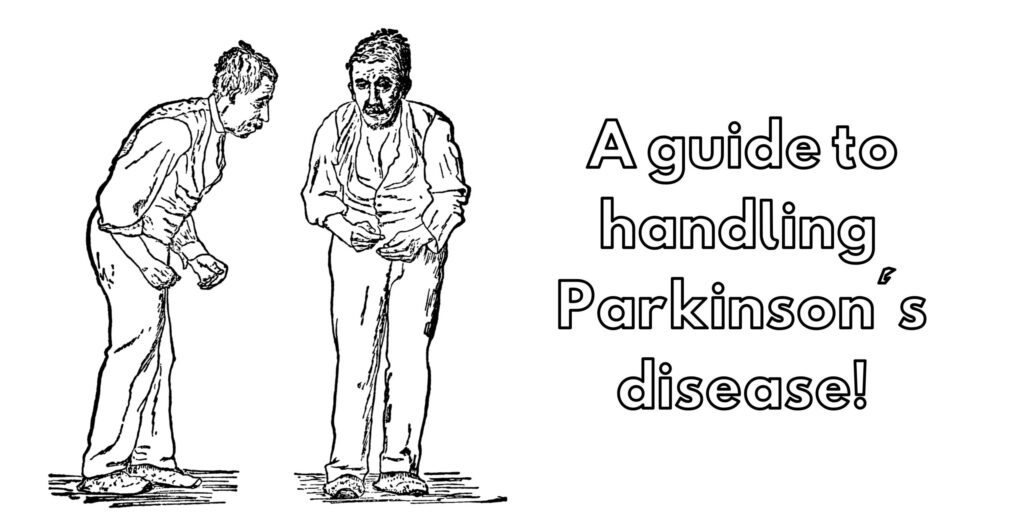Causes of Parkinson’s disease
The causes of Parkinson’s disease, along with its symptoms and treatments, are discussed meticulously in this article. Parkinson’s disease is a brain ailment that produces unintentional or uncontrolled movements, including shaking, stiffness, and stability and coordination problems. Symptoms normally appear slowly and develop over time, and patients might have trouble walking and communicating as the condition advances. They could also have mental and behavioural abnormalities, as well as sleep issues, stress, memory problems, and exhaustion. While everyone can be affected by Parkinson’s disease, certain research findings imply that men are more affected than women. It’s unknown why, but research is ongoing on what characteristics can enhance a person’s susceptibility. One obvious danger is old age: Although most persons with Parkinson’s disease get the condition beyond 60, around 5% to 10% develop it before 50. Parkinson’s disease is generally inherited, although not always, and some kinds have been related to particular gene alterations.
Causes of Parkinson’s disease
When neurons in the basal ganglia, which are crucial in the functions of the nervous system, become affected or die, the most obvious signals and symptoms of Parkinson’s disease appear. These nerve cells, or neurons, typically generate dopamine, a vital cognitive neurotransmitter. When nerves die or become compromised, they create less dopamine, which results in the disease’s movement issues. Experts are yet baffled as to precisely what triggers nerves to perish. According to researchers, the causes of Parkinson’s disease entail genes, and certain genetic abnormalities may trigger the illness. However, these are infrequent, except in uncommon situations involving many family members with Parkinson’s disease. On the other hand, some gene variants seem to raise the chance of Parkinson’s disease, though at fairly low risk for any of such genetic indicators. Nerve endings that generate norepinephrine, the major chemical transmitter of the sympathetic nervous system, which governs numerous bodily processes, including heart rate and blood pressure, are also lost in people with Parkinson’s disease. Some of the non-movement symptoms of Parkinson’s disease, like weariness, fluctuating blood pressure, reduced food movement through the digestive tract, and a quick fall in blood pressure when a person rises up from a sitting or lying posture, might be explained by the depletion of norepinephrine.
Symptoms of Parkinson’s disease
The basic symptoms of Parkinson’s disease are impaired balance and coordination, which can lead to falls, slowness of movement, muscular stiffness (when a muscle remains clenched for a long period), and tremor in the hands, arms, legs, jaw, or head. Skin difficulties, urinary problems or constipation, trouble eating, chewing, and speaking, as well as sadness and other emotional disturbances, are all possible signs. The causes of Parkinson’s disease involve numerous abnormalities that have been observed in the brains of persons with the illness, while the cause of these changes is unknown. Individuals with Parkinson’s disease experience different symptoms and develop at different rates. The disease’s initial symptoms are mild and develop over time. For example, people may have slight tremors or trouble getting out of chairs. They might observe that they talk too quietly, that their handwriting is sluggish and constricted, or that their handwriting is tiny and cramped. Friends and family members might be the earliest to detect abnormalities in somebody with Parkinson’s disease in its early stages. They may observe that the individual ‘s face is devoid of emotion and unanimated, or that one leg or arm is not able to move on a consistent basis.
Treatments of Parkinson’s disease
Even though there is no treatment for Parkinson’s disease, medications, surgical therapy, and other treatments might help to alleviate certain complications. Medicines may help cure Parkinson’s effects by reducing non-movement disorders and affecting other brain chemicals, including neurotransmitters, which convey information among brain cells. Additionally, they also aid in increasing dopamine levels in the brain. The causes of Parkinson’s disease comprise environmental triggers, and certain chemicals or ecological variables might raise the likelihood of developing Parkinson’s disease later in life; however, the probability is modest. Yoga and tai chi to promote mobility and flexibility, massage treatment to relieve stress, and a nutritious diet to support general well-being are other therapies that might aid regulate Parkinson’s symptoms. Muscle-strengthening exercises, as well as exercises that increase balance, flexibility, and coordination, might help. Physical, occupational, and speech treatments could also aid in the treatment of gait and voice abnormalities, tremors and stiffness, and mental decline.



